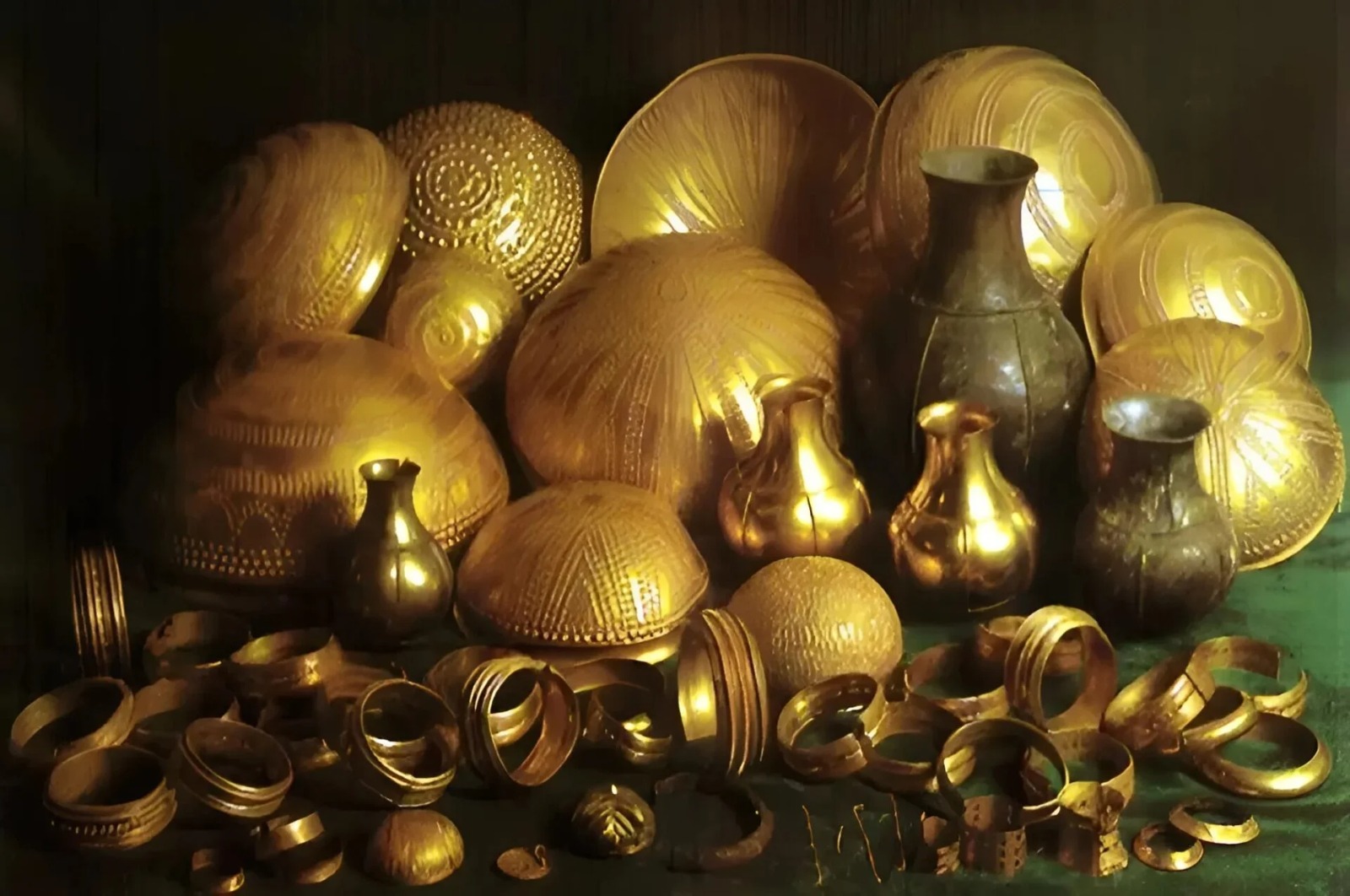-
17:20
-
17:00
-
16:50
-
16:42
-
16:30
-
16:20
-
16:00
-
15:50
-
15:30
-
15:20
-
15:00
-
14:50
-
14:30
-
14:20
-
14:00
-
13:30
-
13:20
-
13:00
-
12:50
-
12:30
-
12:20
-
12:00
-
11:50
-
11:35
-
11:32
-
11:30
-
11:20
-
11:00
-
10:50
-
10:30
-
10:20
-
10:00
-
09:50
-
09:30
-
09:23
-
09:20
-
09:00
-
08:50
-
08:30
-
08:20
-
08:00
-
07:50
-
07:30
-
07:00
Ancient Treasure Holds Clue to Advanced Metallurgical Knowledge
A trove of rare artifacts from Bronze Age Iberia contains traces of an exotic extraterrestrial metal, according to a new study. Researchers analyzing pieces from the renowned Treasure of Villena discovered that two items were crafted from meteoritic iron, indicating sophisticated metallurgical skills among the peoples of the region over 3000 years ago.
The treasure, unearthed in 1963 in Alicante, Spain, consists of 66 beautifully made gold objects and is considered one of the finest collections of bronze-age goldsmithing in Europe. What intrigued archaeologists from the outset were a tarnished bracelet and hemispherical ornament that appeared to be constructed from an unusual material for the period - iron.

Led by Salvador Rovira-Llorens of the Spanish National Archaeology Museum, a team embarked on a detailed investigation of the anomalous artifacts. Through mass spectrometry analysis calibrated to detect nickel content, a tell-tale signature of meteoritic iron, they found the pieces indeed contained extraterrestrial iron rather than terrestrial varieties. Radiocarbon dating places the artifacts’ creation between 1500-1200 BCE, well before the introduction of ironworking to Iberia around 850 BCE.
This discovery has major implications. Working meteoritic iron demands higher temperatures and specialised techniques compared to terrestrial iron due to its crystalline structure and mineral inclusions. The skills demonstrated would have been considerably advanced for the timeframe. Further, the team suggests these may be the earliest known meteoritic iron artifacts identified from the Iberian Peninsula, upending assumptions about the level of metallurgical sophistication there during the Bronze Age.

While corrosion hampered analyses, non-invasive advanced techniques may yield even clearer insights into these enigmatic items in future. For now, the Treasure of Villena has offered a rare window into the underappreciated technical prowess of ancient Iberian metal smiths. Their mastery of exotic meteoritic iron underscored a much earlier onset of high-level metallurgy in the region than conventionally thought.


